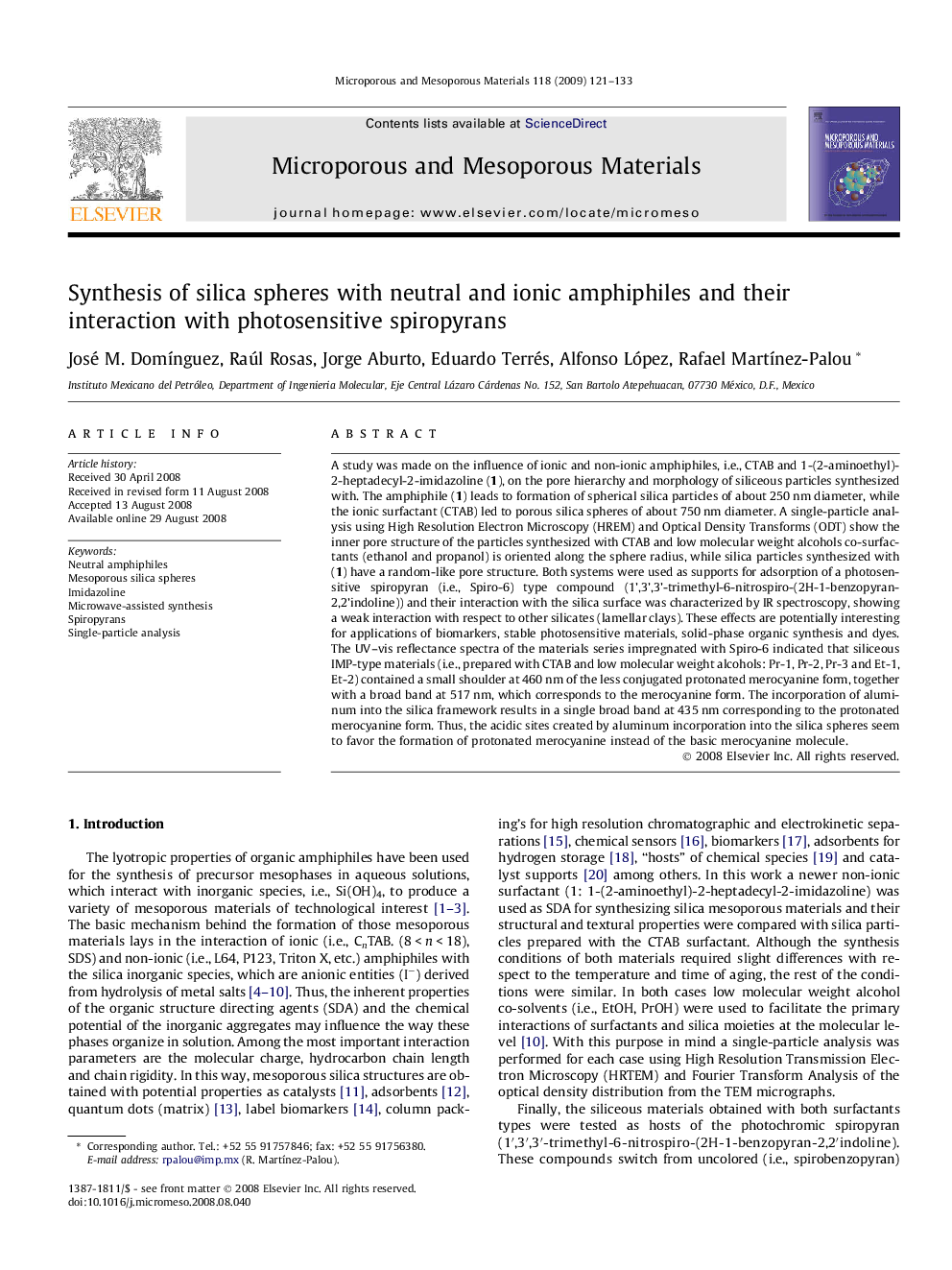| کد مقاله | کد نشریه | سال انتشار | مقاله انگلیسی | نسخه تمام متن |
|---|---|---|---|---|
| 75046 | 49108 | 2009 | 13 صفحه PDF | دانلود رایگان |

A study was made on the influence of ionic and non-ionic amphiphiles, i.e., CTAB and 1-(2-aminoethyl)-2-heptadecyl-2-imidazoline (1), on the pore hierarchy and morphology of siliceous particles synthesized with. The amphiphile (1) leads to formation of spherical silica particles of about 250 nm diameter, while the ionic surfactant (CTAB) led to porous silica spheres of about 750 nm diameter. A single-particle analysis using High Resolution Electron Microscopy (HREM) and Optical Density Transforms (ODT) show the inner pore structure of the particles synthesized with CTAB and low molecular weight alcohols co-surfactants (ethanol and propanol) is oriented along the sphere radius, while silica particles synthesized with (1) have a random-like pore structure. Both systems were used as supports for adsorption of a photosensitive spiropyran (i.e., Spiro-6) type compound (1’,3’,3’-trimethyl-6-nitrospiro-(2H-1-benzopyran- 2,2’indoline)) and their interaction with the silica surface was characterized by IR spectroscopy, showing a weak interaction with respect to other silicates (lamellar clays). These effects are potentially interesting for applications of biomarkers, stable photosensitive materials, solid-phase organic synthesis and dyes. The UV–vis reflectance spectra of the materials series impregnated with Spiro-6 indicated that siliceous IMP-type materials (i.e., prepared with CTAB and low molecular weight alcohols: Pr-1, Pr-2, Pr-3 and Et-1, Et-2) contained a small shoulder at 460 nm of the less conjugated protonated merocyanine form, together with a broad band at 517 nm, which corresponds to the merocyanine form. The incorporation of aluminum into the silica framework results in a single broad band at 435 nm corresponding to the protonated merocyanine form. Thus, the acidic sites created by aluminum incorporation into the silica spheres seem to favor the formation of protonated merocyanine instead of the basic merocyanine molecule.
Journal: Microporous and Mesoporous Materials - Volume 118, Issues 1–3, 1 February 2009, Pages 121–133